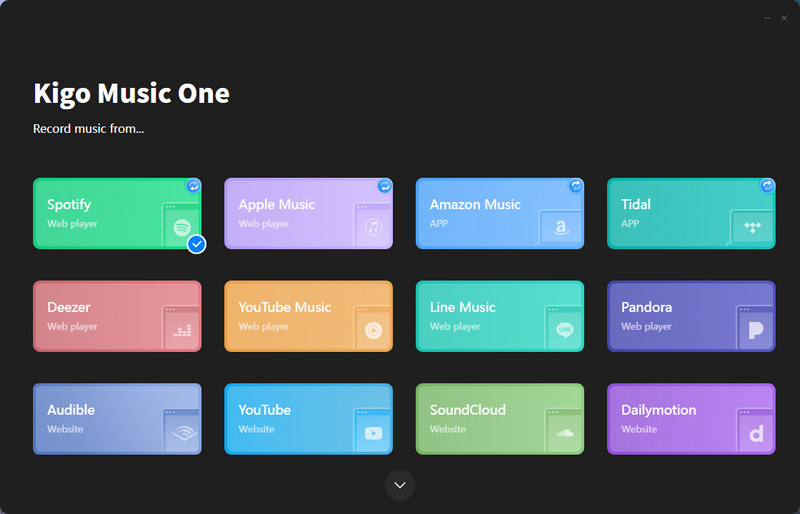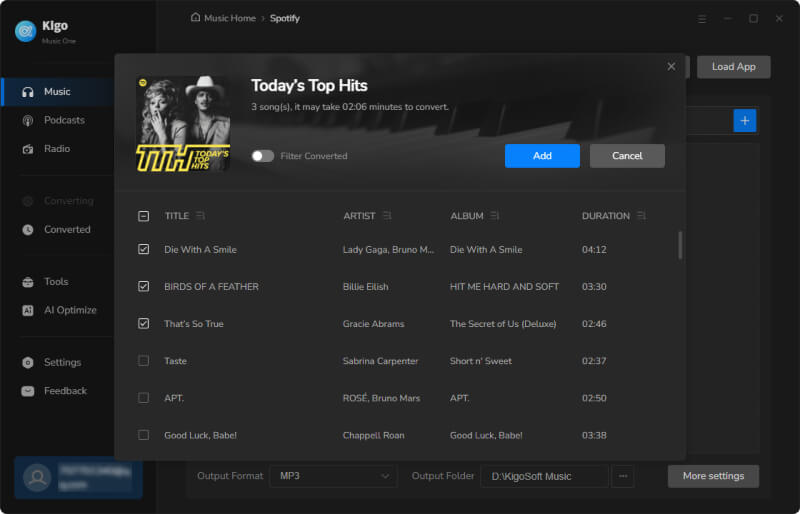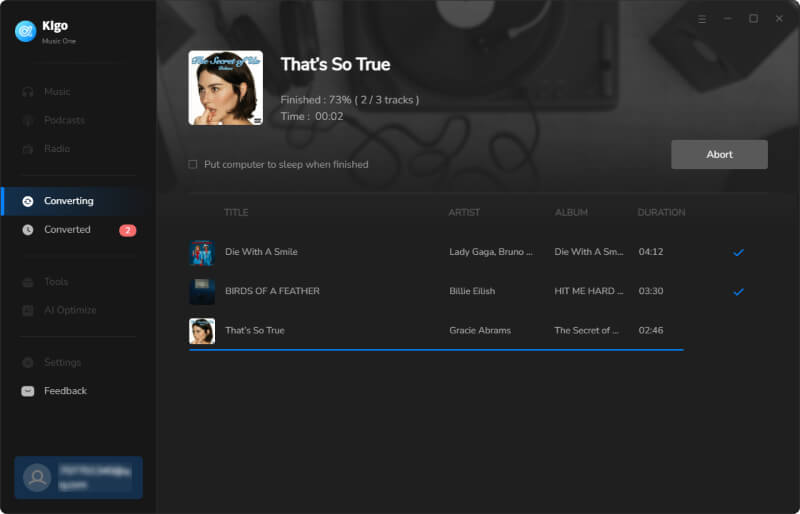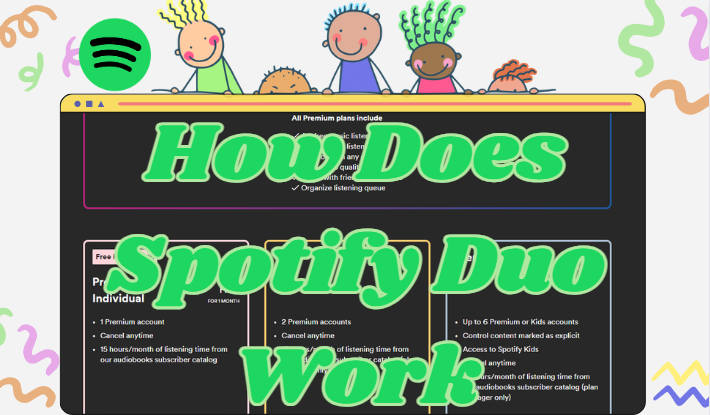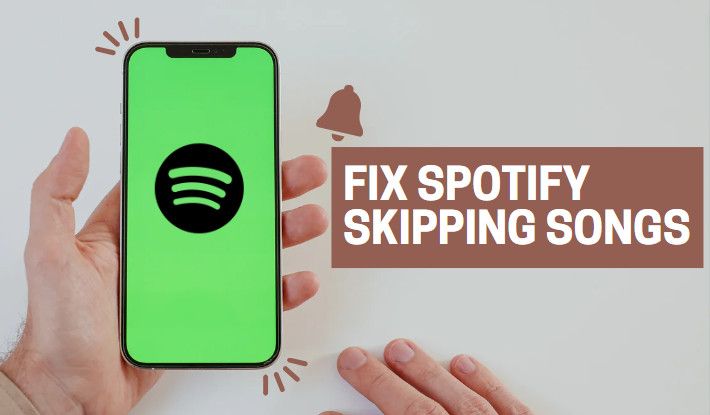How to Connect Spotify to Alexa? Solved!
With Spotify connected to Alexa, you can play Spotify on Alexa devices, control playback with simple voice commands, and enjoy immersive listening. But how to connect Spotify to Alexa? How to play Spotify on Alexa? Let's step into this article and get a step-by-step guide.
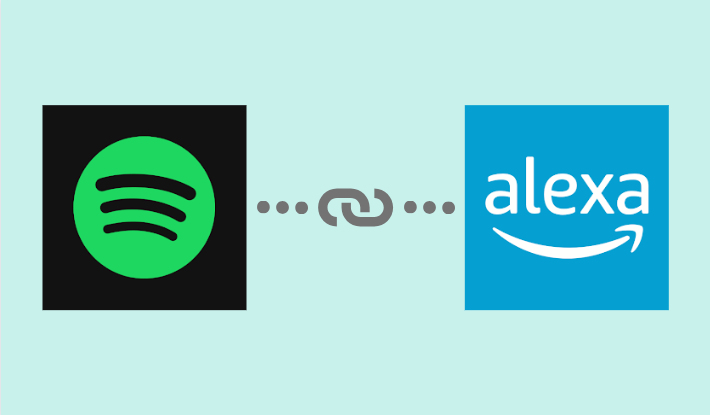
Part 1. How to Connect Spotify to Alexa?
Step 1 Install and open the Amazon Alexa app on your smartphone.
Step 2 Tap on "More" at the bottom and select "Settings" on the new screen.
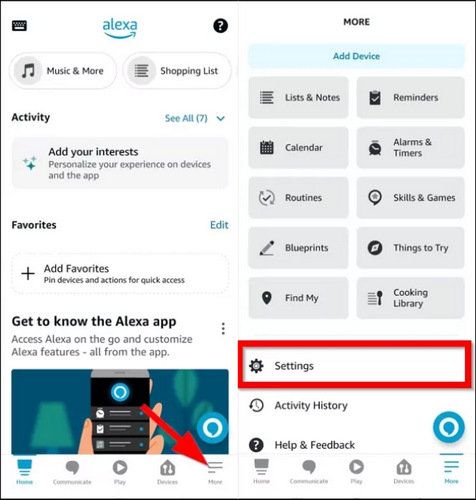
Step 3 Scroll down and tap on "Music & Podcasts".
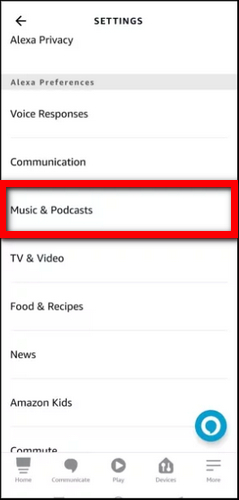
Step 4 Tap "Link New Service" if you cannot find Spotify under the SERVICES list.

Step 5 Select Spotify and follow to tap on "ENABLE TO USE".
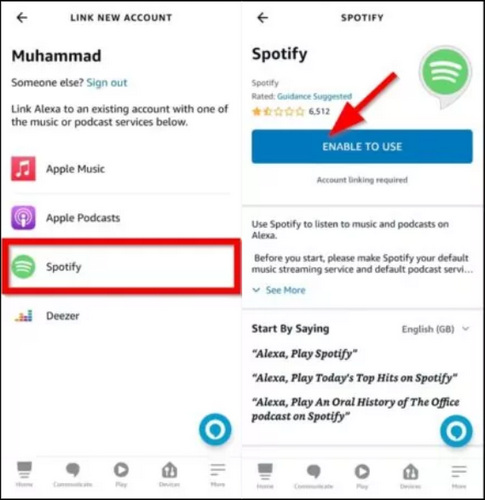
Step 6 Enter your Spotify account information to log in and tap on "AGREE" to authorize the use through Alexa. Spotify will then be connected to Alexa.

Part 2. How to Play Spotify on Alexa?
After Spotify is linked to Alexa, Alexa has full access to your curated playlists, favorite artists, and albums, as well as personalized music on Spotify. Instead of playing Spotify on Alexa devices with handpicks, you can control the playback process with voice commands.
For example, by saying "Alexa, play [my favorite Taylor] playlist", Alexa will access the playlist in your library and then play it on your Alexa device. If you would like to stop playing Spotify on Alexa, simply say "Alexa, stop". This part lists some common voice commands and you can try them to order Alexa.
- "Alexa, play [title/artist/album]."
- "Alexa, play [song] by [artist]."
- "Alexa, play [playlist]."
- "Alexa, shuffle [playlist]."
- "Alexa, play [genre]."
- "Alexa, play [podcast name]."
- "Alexa, resume [title]."
- "Alexa, play."
- "Alexa, stop."
- "Alexa, pause."
- "Alexa, stop shuffle."
- "Alexa, volume up / down."
- "Alexa, what song is this?"
- "Alexa, turn this off in [minutes]."
Part 3. How to Set Spotify as Default Player on Alexa?
The Amazon Alexa app generally sets Amazon Music as the default music player, and if you are controlling the Alexa devices with voice commands, you have to end with "on Spotify". Fortunately, you can set Spotify as the default player on Alexa if you prefer a more concise expression. Here is how to set it.
Step 1 Open the Alexa app and tap "More" on the bottom bar.
Step 2 Select "Settings > Music & Podcasts" on the screen.
Step 3 Tap "Your Default Services" on the new screen.
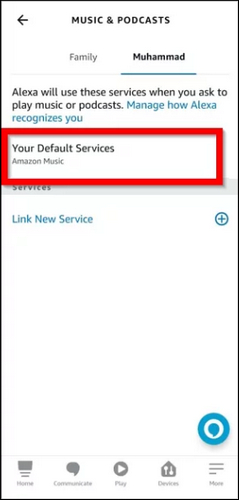
Step 4 Tap on the "Change" button under the field you want to change, for example, the music field.
Step 5 Tap to switch the default music player to Spotify.
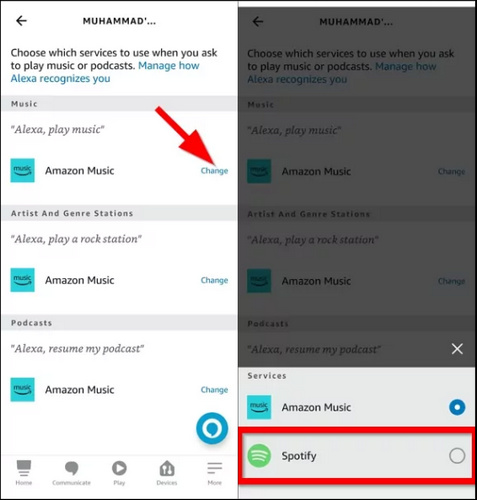
Part 4. How to Play Spotify on Alexa Without Wi-Fi?
After connecting Spotify to Alexa, you can play Spotify on Alexa devices and have an immersive listening experience. Pay attention to keeping your Wi-Fi connection stable during playback, otherwise, pausing and lagging may interrupt your listening. What if you don't have Wi-Fi? How can you play Spotify on Alexa without Wi-Fi? Try using Kigo Music One.
Kigo Music One is professionally developed as a one-stop tool to download and convert music from Spotify and other music streaming services for listening without Wi-Fi or an internet connection. This program turns encrypted Spotify music into plain audio files, allowing permanent storage on your local computers. In the meantime, Kigo Music One intelligently filters out ads and losslessly preserves the original audio quality and full ID3 tags, giving you an ad-free auditory experience as if you are using streaming platforms online. With Kigo Music One, you can easily play Spotify on Alexa without Wi-Fi or an internet connection.

Key Features of Kigo Music One
- Download music from Spotify, Apple Music, Amazon Music, etc.
- Convert Spotify music to MP3, FLAC, WAV, AAC, AIFF, ALAC.
- Preserve source audio quality, full ID3 tags, and track lyrics.
- Run at 10x faster speed & batch download.
- Sort Spotify music files by playlist, artist, album, etc.
- Support Spotify Free or Spotify Premium account.
- Activate the permanent playback of Spotify music.
Windows 11/10/8/7 Free Download
macOS 11 or later
Step 1 Start Kigo Music One on your computer and select a Spotify audio source - app or web player.
Step 2 Go to your desired Spotify playlists and click on the "+" icon. Select Spotify songs and click on "Add".
Step 3 Customize output parameters such as output format, output quality, and output path on "Settings".
Step 4 Click on "Convert" to begin downloading Spotify music and save the songs to your local computer.
After completing the process, you can connect your computer to Alexa devices, or transfer Spotify music to your smartphone, and then play Spotify on Alexa without Wi-Fi.
Part 5. FAQs about Connecting Spotify to Alexa
Q1. How to link Spotify to Alexa?
To link Spotify to Alexa, open the Amazon Alexa app on your smartphone or tablet, and then tap "More > Settings > Music & Podcasts > Link New Service > Spotify".
Q2. How to fix Alexa won't play Spotify?
Try the following four solutions: unplug the Alexa device and plug it in again after seconds; connect the device to a different network; remove Spotify from Skill on the Alexa app and re-add it; re-install the Alexa app.
Q3. Can I play Spotify on multiple Alexa devices simultaneously?
Yes, you can do that by creating a multi-room music group. Open the Amazon Alexa app, tap "Devices > Plus > Combine Speakers > Multi-Room Music", and then follow the on-screen instructions.
Conclusion
After reading this article, you will learn how to connect Spotify to Alexa and play Spotify on Alexa devices. Once Spotify is linked to Alexa, you can enjoy a more immersive listening experience and control playback, volume, and shuffle using voice commands. You won't need to use your fingers to play music. Simply follow the instructions above to connect Spotify to Alexa. Additionally, if you want to play Spotify on Alexa without Wi-Fi, consider using Kigo Music One to download Spotify to your local computer.
Note: The trial version allows you to download only the first minutes of each file. To access the full length, please unlock it with a valid license code.

Ava Hamilton | Senior Writer
She has been working in the audio and video industry for many years and is familiar with various mainstream audio and video streaming platforms. She has shared a lot of information about audio and video conversion tools, technologies and trends, and provided professional suggestions, detailed reviews and guides.


